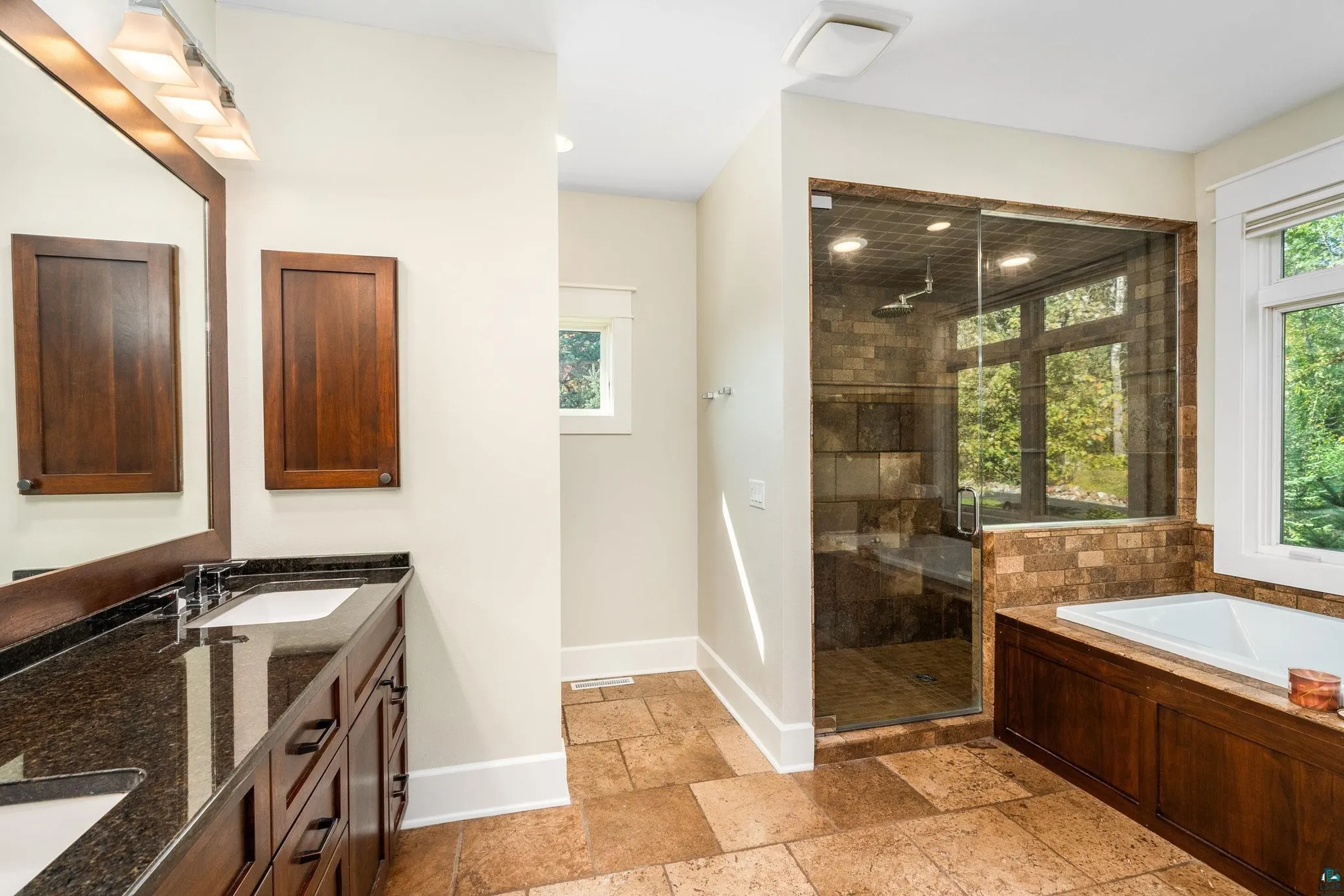Wherever tradition and technology meet, new frontiers are explored, and innovations blossom. At first, people panic and speak ill of such unorthodox unions. Yet, with time, the skeptics begin to adjust to the new reality and celebrate the change.
This is exactly the story of mobile phones, rock music, the internet, and, to give you a more recent example, the interior design revolution by AI that stunned architects, interior designers, graphic designers, and, more than anyone else, real estate agents.
AI-powered generative design tools can create customized home interior designs as required by the homeowner. Following this, an AI-based “inspection” tool can evaluate the design, identify the parts that can be improved, and make suggestions accordingly. This way, AI ensures that the resulting outputs enjoy the same level of aesthetics and ergonomics. But how are these models trained to perform such tasks?


Training AI Models for Interior Design Tasks
Developing AI models for interior design purposes requires some hard work. Carry on down bleow for a brief overview of how it’s done.
Data collection
The first part of preparing any interior design AI model involves collecting data. As far as interior design is concerned, the data is primarily, if not only, restricted to photos of different rooms of houses or apartments. This may sound oversimplified, though, as thousands of photos are needed for every room, and for that matter, for every style, so as to ensure that the model will be rich in terms of data.
To give you an example, if we want our model to properly design a living room with the “modern style”, we need to feed it with at least a thousand photos of living rooms designed in that style. Now, imagine how many room types we have and how many design styles there are!
Organizing the data
When we’re done collecting the data, it’s time to organize them so that our model understands them better. This means that we should remove unwanted or tricky details and add all the necessary information that would help our model to learn well and have the best performance.
Feeding the model
After organizing the data, we can feed our model. This means that we give it all the photos we’ve got and tell it what type of room and which style each photo shows. In doing so, we’ll tag each and every photo so that our model can differentiate photos that belong to different categories, such as a bedroom versus the living room or the modern style versus a specific type of farmhouse style. This is commonly referred to as data tagging, which makes up the core of data feeding because if we tag the photos incorrectly or insufficiently, our model will malfunction.
Training the model
Following the old school traditions where teachers would ask the questions and answer them too, training an AI model for interior design involves asking it a question, giving it a picture, and then answering the question, telling the model what type of room or style it shows.
In a sense, we could say that training takes place at the same time we’re feeding the model. But, how can we make sure that our model is properly fed, or in other words, has learned its lessons?
Testing the model
As every type of training follows some kind of testing, our model’s performance should be assessed and evaluated, too. One way to do this is to give the model a number of photos, and then ask it to design each photo with a certain style.
From the way it performs the tasks, we could tell if it’s properly trained or not. If we determine that it’s working properly, then we could put it to use; if not, we need to take the necessary steps to refine it.
Refining the model
It’s wishful thinking and only too unrealistic – if not impossible – for an AI model to show flawless performance as soon as the training phase is done. Some issues just don’t show up till the very last moment, and that’s when we realize there’s a lot more work to be done.
There are two primary reasons why AI models make mistakes. It’s either due to 1) having insufficient data, or 2) improper tagging. Whatever the reason, the training phase should be repeated until we are satisfied with the performance of our model.

How Does AI Change the Interior Design Process?
The interior design revolution by AI is yet in its infancy. With designers getting used to AI, on the one hand, and AI itself improving, on the other, we’ve been witnessing a lot of changes in the industry. That being said, let’s take a look at AI applications in interior design.
Personalized designs
Traditionally, interior designers had to count on their own knowledge, experience, and intuition to find the proper design that would “hopefully” go right with their client’s taste.
Today, AI-powered tools and websites generate multiple designs in a matter of seconds. All designers have to do is choose from among those designs! It shouldn’t go unnoticed that AI generates such design ideas based on a client’s color scheme, room size, furniture style, budget, etc.
To get a taste of how AI-powered design websites can help individuals come up with the best design style ideas, take a look at Midjourney or Canva.
Improved eco-friendliness
Environmental impacts, human health and well-being, resource conservation, and even market demand are some of the reasons why eco-friendliness is of key value in modern interior design.
By analyzing the present data on environmental impact, fuel consumption, and material usage, AI algorithms can develop design solutions that reduce waste production as well as energy usage, and maximize the efficient use of resources.
Apart from this, smart homes control energy consumption, fine-tune temperature, and adjust lighting to create living spaces that are more sustainable and energy-efficient.
These AI-powered systems learn and analyze the behavior patterns of occupants and adjust the right lighting, temperature, etc., to guarantee optimal comfort while minimizing energy loss.
Designing multi-functional spaces
As the earth’s population grows, we need to adapt to a more compact lifestyle. Very soon, we’ll all have to learn how to use the same room for dining, sleeping, and maybe even cooking!
To make sure that such multifunctional rooms meet our expectations in each aspect, we depend on AI, and it sure has proven a reliable shoulder to lean on.
Greater appreciation for mother nature
Seems like there has always been an inseparable bond between man and nature. With global temperature on the rise and an ongoing increase in urban pollution, we now feel a greater need to respect mother nature. That’s why our natural habitat is gaining more and more value in present interior design practices and trends.
Such designs focus on creating environments inside our homes/apartments that provide immediate contact with nature. Indoor fountains, natural textiles, green walls, or even mini gardens on our roofs are just a few quick examples of how we could provide more room for nature in our homes.
Predicting future design styles
AI’s ability to predict future trends is not restricted to the stock market only. AI is capable of predicting future interior design styles by analyzing vast amounts of data that is fed to it. Then, through rough machine learning techniques, AI algorithms identify patterns, similarities, and correlations among various design elements, colors, materials, and spatial arrangements.
By training on this data, AI-powered systems create models that can understand and develop interior design styles. They also learn to recognize specific features and compositions associated with those different styles. Drawing on this understanding, AI models make predictions about emerging styles based on current trends, historical data, and evolving preferences.
However, we should remind ourselves that AI predictions are just one tool in the design process. The future of interior design is influenced by numerous factors, including cultural shifts, technological advancements, societal changes, and individual creativity. Whatever predictions that AI is making should be considered alongside human expertise and intuition.
Concluding Thoughts
Shedding light on how AI models are trained to perform interior design, we discussed the various applications of AI in this industry.
While AI brings undeniable benefits, it’s important to remember that human expertise remains invaluable. The combination of AI and human creativity paves the way for personalized and exceptional designs. Embracing the interior design revolution by AI promises exciting prospects of creating harmonious, innovative spaces that reflect our individuality and enhance our lives.
Given AI’s beneficial applications in interior design, it’s safe to say that as interior design is making its way through a surprisingly innovative era, AI will remain an irreplaceable, integral part that will astonish us even more.


How Does AI Change the Interior Design Process?
The interior design revolution by AI is yet in its infancy. With designers getting used to AI, on the one hand, and AI itself improving, on the other, we’ve been witnessing a lot of changes in the industry. That being said, let’s take a look at AI applications in interior design.
Personalized designs
Traditionally, interior designers had to count on their own knowledge, experience, and intuition to find the proper design that would “hopefully” go right with their client’s taste.
Today, AI-powered tools and websites generate multiple designs in a matter of seconds. All designers have to do is choose from among those designs! It shouldn’t go unnoticed that AI generates such design ideas based on a client’s color scheme, room size, furniture style, budget, etc.
To get a taste of how AI-powered design websites can help individuals come up with the best design style ideas, take a look at Midjourney or Canva.
Improved eco-friendliness
Environmental impacts, human health and well-being, resource conservation, and even market demand are some of the reasons why eco-friendliness is of key value in modern interior design.
By analyzing the present data on environmental impact, fuel consumption, and material usage, AI algorithms can develop design solutions that reduce waste production as well as energy usage, and maximize the efficient use of resources.
Apart from this, smart homes control energy consumption, fine-tune temperature, and adjust lighting to create living spaces that are more sustainable and energy-efficient.
These AI-powered systems learn and analyze the behavior patterns of occupants and adjust the right lighting, temperature, etc., to guarantee optimal comfort while minimizing energy loss.
Designing multi-functional spaces
As the earth’s population grows, we need to adapt to a more compact lifestyle. Very soon, we’ll all have to learn how to use the same room for dining, sleeping, and maybe even cooking!
To make sure that such multifunctional rooms meet our expectations in each aspect, we depend on AI, and it sure has proven a reliable shoulder to lean on.
Greater appreciation for mother nature
Seems like there has always been an inseparable bond between man and nature. With global temperature on the rise and an ongoing increase in urban pollution, we now feel a greater need to respect mother nature. That’s why our natural habitat is gaining more and more value in present interior design practices and trends.
Such designs focus on creating environments inside our homes/apartments that provide immediate contact with nature. Indoor fountains, natural textiles, green walls, or even mini gardens on our roofs are just a few quick examples of how we could provide more room for nature in our homes.
Predicting future design styles
AI’s ability to predict future trends is not restricted to the stock market only. AI is capable of predicting future interior design styles by analyzing vast amounts of data that is fed to it. Then, through rough machine learning techniques, AI algorithms identify patterns, similarities, and correlations among various design elements, colors, materials, and spatial arrangements.
By training on this data, AI-powered systems create models that can understand and develop interior design styles. They also learn to recognize specific features and compositions associated with those different styles. Drawing on this understanding, AI models make predictions about emerging styles based on current trends, historical data, and evolving preferences.
However, we should remind ourselves that AI predictions are just one tool in the design process. The future of interior design is influenced by numerous factors, including cultural shifts, technological advancements, societal changes, and individual creativity. Whatever predictions that AI is making should be considered alongside human expertise and intuition.


Concluding Thoughts
Shedding light on how AI models are trained to perform interior design, we discussed the various applications of AI in this industry.
While AI brings undeniable benefits, it’s important to remember that human expertise remains invaluable. The combination of AI and human creativity paves the way for personalized and exceptional designs. Embracing the interior design revolution by AI promises exciting prospects of creating harmonious, innovative spaces that reflect our individuality and enhance our lives.
Given AI’s beneficial applications in interior design, it’s safe to say that as interior design is making its way through a surprisingly innovative era, AI will remain an irreplaceable, integral part that will astonish us even more.
FAQ
One limitation of AI is that it requires high-quality and diverse data for accurate predictions. As long as our data is incomplete, we can expect good results from it.
There is also the risk of overreliance on technology at the expense of human creativity and expertise. To tackle this problem, we need to keep the balance between our reliance on AI and our human creativity.





